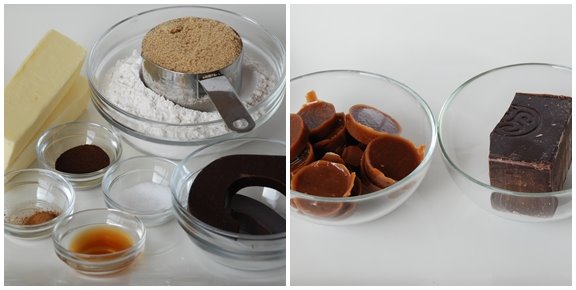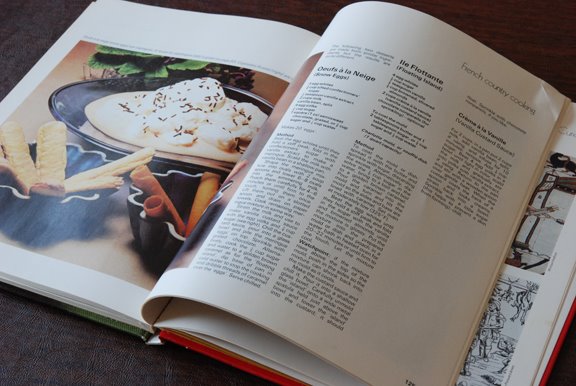.jpg) For the next few classes, we're learning about different types of poultry. Cornish hen is on the menu this week (since I couldn't find guinea hen at the butcher). According to Wise Geek, the term "Guinea hen was used to refer to these small poultry servings but Cornish game hen has become more popular."
For the next few classes, we're learning about different types of poultry. Cornish hen is on the menu this week (since I couldn't find guinea hen at the butcher). According to Wise Geek, the term "Guinea hen was used to refer to these small poultry servings but Cornish game hen has become more popular."The Cornish hen is a plump all-white meat bird. Its original breeder was Alphonsine "Therese" Makowsky. Here is a video explaining the history of the Cornish hen.
"The Makowskys began cross-breeding the Cornish game cocks with various chickens and game birds, including a White Plymouth Rock hen and a Malayn fighting cock, to develop the Rock Cornish game hen — a succulent bird with all-white meat, large enough for a single serving." Link
Cabbage and Other Vegetables
Again, this recipe calls for many pots. In Saucepan #1, the cabbage is blanched. Mon petit chou. I love boiled cabbage that's then drizzled with butter. Its subtle flavor is very comforting. In this dish, it's blanched and served along with the carrots and onions and plays its supporting role very well.
In Large Casserole #2, the onions are cooked until tender, and then the carrots are added. The cabbage joins the milieu along with a Bouquet Garni and 2½ cups of water and this mixture simmers for about 1 hour.
Poultry
I rinsed and dried the Cornish hens with paper towels and then threw a garlic clove, a thyme sprig, and a bay leaf in each cavity and seasoned them with salt and pepper. After trussing, they were ready for Roasting Pan #3 and a 425˚F oven for about 30 minutes.
Bacon
While the hens were roasting, I prepared the bacon. Although the recipe called for lardons, I used bacon strips. Using Twitter, I asked how people like to cook their bacon and got these answers:
chocolatechic
Bake it.
HighChair
Baking sheet in 400F oven. Nice and crisp and stays straight!
PaniniKathy
I do bacon on the broiler tray in the toaster oven - 12-15 min at 375
HarvardCommon
I like it broiled in the oven. Grease drips off, and makes it "slightly" healthier and usually comes out pretty crispy.
Eat_Real
I always do it on a large sheet pan in the oven at 375 degrees F. Cooks a lot at once and turns out nice and crispy.
kayce_m
my vote is for in the oven on a cooling rack-lined sheet pan (i like crispy, tho, LOL)
astarrynite07
you can also bake bacon too or make it in a non-stick pan without any oil once it's done just place it in a paper towel
judecee
sandwiched between a cast iron skillet and press
brucetraser
here's something I want to try! http://tinyurl.com/a5pvvq
RecipeGirl
I hate all of the grease, so I tend to wrap it in paper towels and microwave it. Not nice & crispy though if you need that.
whatsinyourbox
george foreman grill
Polish Sausage
Polish sausage from Butcher Boy Meats in Regina, Saskatchewan with some dill cream cheese and table water crackers was a staple when I was in university. I haven't been able to find Polish sausage that tastes as good as theirs yet. This sausage was tucked into Sauté Pan #2 along with the vegetables, bacon and hens, and cooked along with everything else for awhile. Once everything had finished cooking (about 20 minutes later), I sliced up the Polish sausage and dinner was ready.
Recipe: Pintadeaux au Chou (Guinea Hen with Cabbage)
Serves: 6+mise+en+place.jpg)
Ingredients:
1 medium head green cabbage
2 tablespoons vegetable oil
4 tablespoons unsalted butter
1 large onion, sliced
¼ pound carrots, sliced
1 Bouquet Garni
Salt and freshly ground pepper
¼ pound slab bacon, sliced ¼ inch thick
2 guinea hens, 2 pounds each (I used Cornish hens)
2 cloves garlic
2 sprigs fresh thyme or ¼ teaspoon dried
2 bay leaves
2 tablespoons softened butter
¾ pound Polish sausageYou can find the recipe for Pintadeaux au Chou (Guinea Hen with Cabbage) in the book Le
Cordon Bleu at Home (affiliate link) or a similar recipe here. To see how the rest of the Whisk Wednesdays group fared with their recipe, click here (or check out the sidebar) and then click on each blogger!
+(2).jpg) Tasting Notes
Tasting Notes
The mixed meat medley was nice. I liked the Polish sausage and bacon coupled with the Cornish Hens, which added extra flavor to this delicate meat. The Cornish Hens were tender and delicious. Because the hens are braised in the pot with all the vegetables with the lid on for the last bit, the skin got soft. Next time I would finish the hens in the oven instead and merge the two dishes at the table. Again, too many dishes to be practical, but tasty all the same.
Next Week (March 4)
• Fricassée de Poulet à l'ail et à la Sauge (Chicken Fricassee with Garlic and Sage) pages 324-325
My Favorite Dish
This week, Michelle from Big Black Dog, who is part of the Whisk Wednesdays group, suggested showing off our favorite dish. Since I started food blogging, food props have become a passion and more fun to shop for than clothes or shoes. Here is my favorite dish which was given to me by my mom. The snowflake dish represents some of my first photos, which were taken on the snowbanks on my back deck last Spring.
 Gifts
Gifts
Michelle from Big Black Dog, who has an amazing list of chef's tips ready to share, set up a little swap among the participants in Whisk Wednesdays. Here is what I received from Jessica from Have We Met? who lives in Charlotte, North Carolina. I have been eyeing this slate cheese plate at our local bookstore for quite some time and she must have read my mind. The heavy cheese knives are lovely too with their crackled look. Thank you, Jessica!
 . . . . . . . . . .
. . . . . . . . . .
Running total: $1,110.03 + $11.01 (hens) + $8.95 (other ingredients) = $1,129.99
($3.33 per serving)
Butter used so far: 9 pounds, 22 tablespoons
. . . . . . . . . .
+(2).jpg) Tasting Notes
Tasting NotesThe mixed meat medley was nice. I liked the Polish sausage and bacon coupled with the Cornish Hens, which added extra flavor to this delicate meat. The Cornish Hens were tender and delicious. Because the hens are braised in the pot with all the vegetables with the lid on for the last bit, the skin got soft. Next time I would finish the hens in the oven instead and merge the two dishes at the table. Again, too many dishes to be practical, but tasty all the same.
Next Week (March 4)
• Fricassée de Poulet à l'ail et à la Sauge (Chicken Fricassee with Garlic and Sage) pages 324-325
My Favorite Dish
This week, Michelle from Big Black Dog, who is part of the Whisk Wednesdays group, suggested showing off our favorite dish. Since I started food blogging, food props have become a passion and more fun to shop for than clothes or shoes. Here is my favorite dish which was given to me by my mom. The snowflake dish represents some of my first photos, which were taken on the snowbanks on my back deck last Spring.
 Gifts
GiftsMichelle from Big Black Dog, who has an amazing list of chef's tips ready to share, set up a little swap among the participants in Whisk Wednesdays. Here is what I received from Jessica from Have We Met? who lives in Charlotte, North Carolina. I have been eyeing this slate cheese plate at our local bookstore for quite some time and she must have read my mind. The heavy cheese knives are lovely too with their crackled look. Thank you, Jessica!
 . . . . . . . . . .
. . . . . . . . . .Running total: $1,110.03 + $11.01 (hens) + $8.95 (other ingredients) = $1,129.99
($3.33 per serving)
Butter used so far: 9 pounds, 22 tablespoons
. . . . . . . . . .
::Whisk Wednesdays::
We're cooking our way through a cooking school curriculum using the Le Cordon Bleu at Home (affiliate link) cookbook. The "classes" are based on the Le Cordon Bleu curriculum found online and used as a guideline. Not all the items in the curriculum are in the cookbook, but most are. Where the items are not in the book, we try to find a suitable substitution. Find out more here.


.jpg)
.jpg)

.jpg)
.jpg)
+mise+en+place.jpg)




.jpg)
.jpg)



.jpg)






.jpg)
+mise+en+place.jpg)
.jpg)

.jpg)






